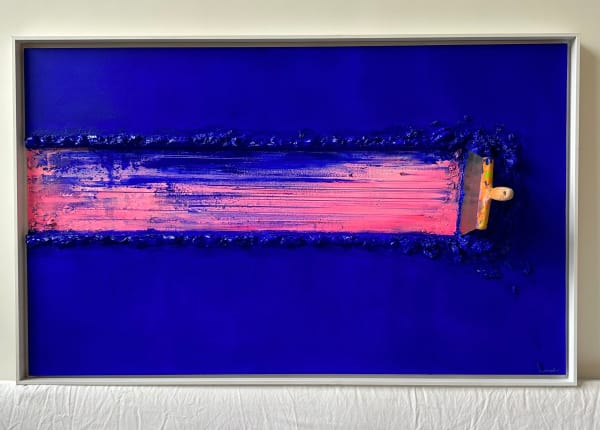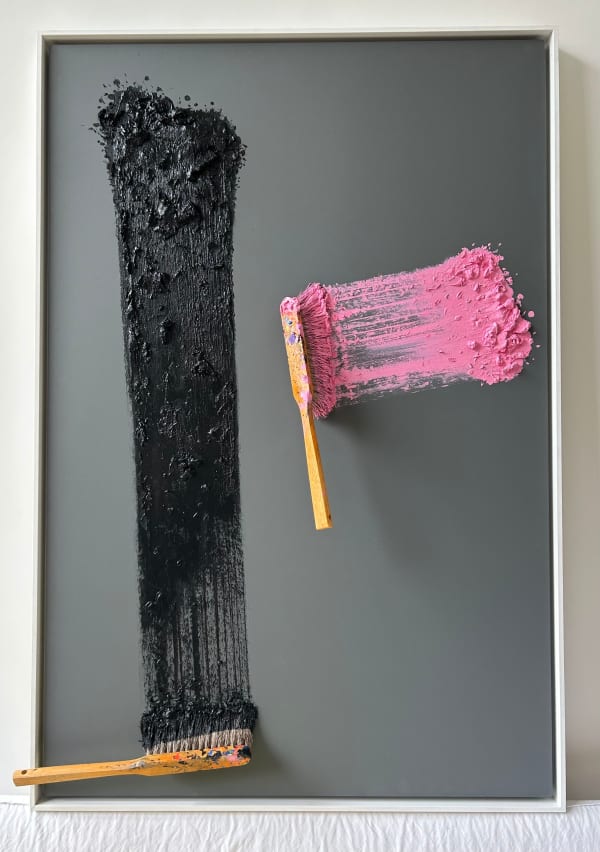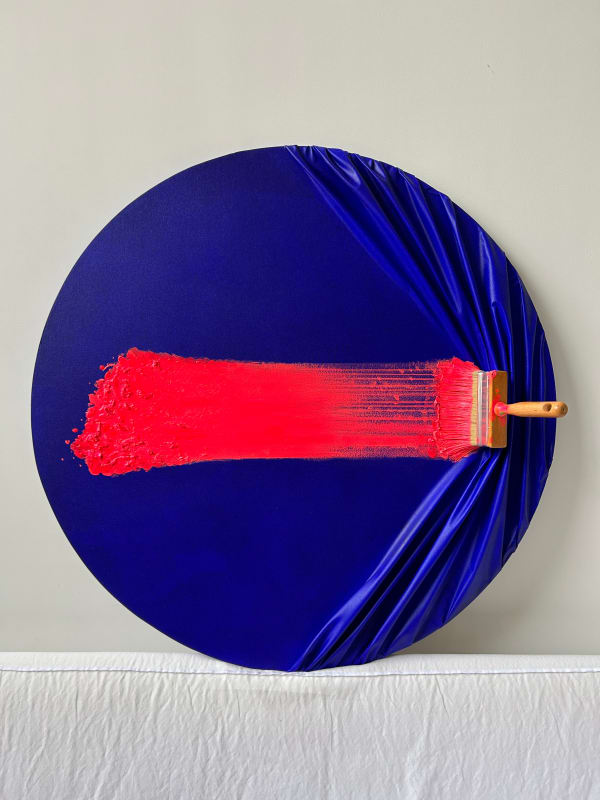Jean-Paul Donadini is a contemporary French artist whose work straddles the boundaries between painting, sculpture, and performance. Born in Troyes in 1951, Donadini studied at the École Nationale Supérieure des Beaux-Arts in Paris, a training ground that would ground his practice in classical techniques while encouraging his embrace of experimental forms. From the outset of his career, Donadini demonstrated a fascination with the physicality of artmaking, eschewing traditional brushwork in favor of more unconventional tools and processes. This desire to engage the surface of the canvas in a tactile, almost ritualistic way remains central to his oeuvre.
His background in printmaking and performance art also informs his painterly practice, which can be seen as a kind of choreographed action. The repetition of gestural forms, often involving the pressing, dabbing, or stamping of objects onto the canvas, aligns his work with the ethos of artists like Yves Klein and Piero Manzoni, who merged bodily action with surface. Donadini's approach is both systematic and improvisational; though the structure of repetition is clearly present, each imprint varies subtly, suggesting the human hand beneath the mechanical form.
What sets Donadini apart is his sculptural approach to painting. His surfaces are often thick with material, rising into shallow relief and giving the works a physicality more akin to low sculpture than to flat imagery. Paint is not applied so much as deposited, compressed, or embedded. The result is a hybrid space where the viewer is invited not just to look but to feel, where touch becomes an implied sense. Many of his works create optical and haptic rhythms, drawing the eye across fields of repeated, tangible marks that activate the canvas as a kind of skin or membrane.
Donadini’s use of unconventional materials further underscores this sculptural sensibility. Fabric, and various industrial tools transform the act of painting into a dialogue between object and surface. This emphasis on process and materiality reflects an interest in the way meaning can emerge through repetition and labor. The result is a body of work that is meditative without being static, playful without being dismissive, and deeply rooted in the tension between precision and chance.
In terms of personal background, Donadini remains somewhat elusive, allowing the work to speak in place of extensive public commentary. He has spent much of his career in France, exhibiting widely across Europe and maintaining a strong presence in both gallery and institutional contexts. Despite his relatively quiet public persona, his works have been collected internationally and often draw critical attention for their unique fusion of formal rigor and conceptual wit. His practice is less about self-expression in the romantic sense, and more about exploring the boundaries of painting itself.
Critics have often aligned Donadini with a lineage of French conceptual painters who blur the lines between high and low, gesture and machine, fine art and craft. Yet unlike many of his contemporaries, Donadini’s work is never ironic for irony’s sake. Instead, it seems rooted in a sincere inquiry into the act of making—what it means to leave a mark, to repeat a gesture, to use banal materials to create something transcendent. In this way, his paintings invite contemplation while retaining an undercurrent of mischief, a tension that animates even his most minimal compositions.
Ultimately, Jean-Paul Donadini's art is a meditation on presence—of the artist, of the material, of the viewer. His surfaces are records of touch and time, of a repeated gesture that refuses to become invisible. By merging painting with performance, and material with meaning, Donadini offers a compelling rethinking of the painter's role—not as a maker of images, but as a facilitator of encounters. His work occupies a space where sculpture, painting, and philosophy meet, quietly but unmistakably pushing the boundaries of contemporary art.









